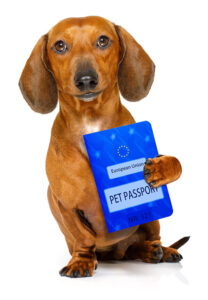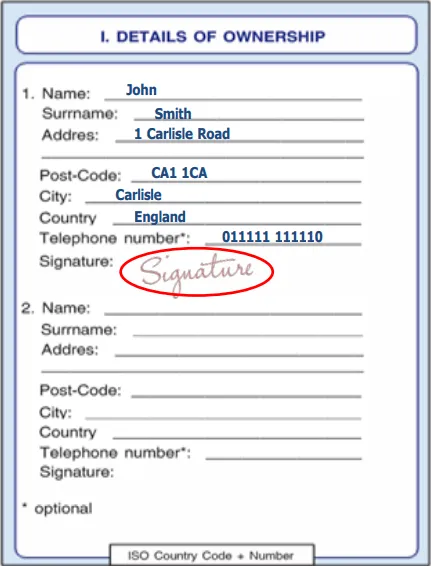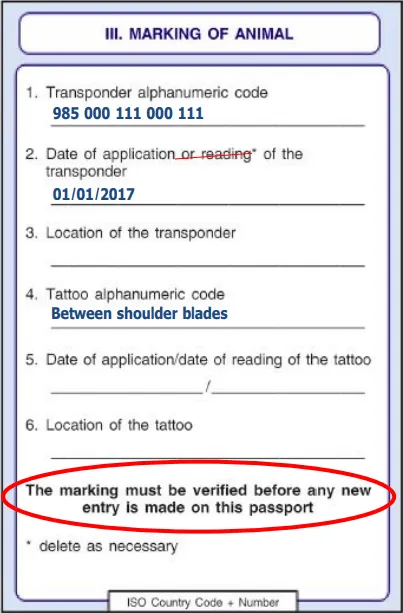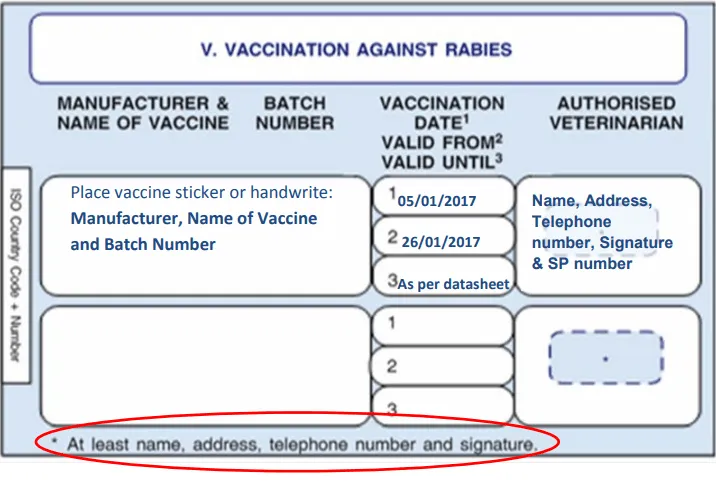What is The Pet Travel Scheme (PETS)? [2023 GUIDE]

What is better than going on holiday? Going on holiday with your beloved furry friend!
Under the Pet Travel Scheme (PETS), you are able to bring your dog, cat or ferret abroad with you. Regularly, it is wrongly assumed that pets must endure a painful length quarantine period when going abroad. However, with a Pet Passport, under the PETS your pet can travel through certain borders with ease. Generally, pets will require a microchip and a rabies vaccination to qualify for travel. However, different countries have additional requirements when it comes to importing and exporting pets.
In this article we will discuss the Pet Travel Scheme in detail.
Table of contents:

What is the Pet Travel Scheme?
- What are the requirements to comply with the Pet Passport Scheme?
What countries are included in the Pet Travel Scheme?
- What are the requirements for the UK Pet Travel Scheme?
Which countries are exempt from quarantine under the Pets Travel Scheme?
When was the pet travel scheme introduced, what if my pet doesn’t pass the requirements for the pet travel scheme, what is the most common reason for failing requirements for the pets, can my puppy or kitten travel with me, are tattoos an acceptable form of identification, is there a limit to the number of animals that can travel under the care of one person.
The Pet Travel Scheme (PETS) is a system which allows animals to travel easily between member countries without undergoing quarantine . A pet passport is a document that officially records information related to a specific animal, as part of that procedure. The effect is to drastically speed up and simplify travel with and transport of animals between member countries, compared to previous procedures if the regulations are followed.
What are the requirements to comply with the Pet Travel Scheme?
ALL COUNTRIES
Most countries require the following to qualify for travel:
- Microchipping – all dogs, cats and ferrets must have a microchip implant. A microchip is a permanent method of electronic identification. The chip, around the size of a grain of rice, is implanted subcutaneously (just under the skin) between the shoulder blades at the back of your pet’s neck. Each chip has a unique number that is detectable with a microchip scanner.
- Rabies vaccination – all dogs, cats and ferrets must be vaccinated against rabies. This procedure is mandatory even if your pet already has a current rabies vaccination. In this case, your pet will need a rabies booster to keep them up to date. For pet travel in Europe, the rabies vaccine should be administered by a veterinarian with a minimum of 21 days before travel. Some countries may differ and always check with your local veterinarian for the procedures to follow.
SOME COUNTRIES
Some countries require the following to be permitted for entry:
- Tapeworm, tick and flea treatment – some countries require animals to be treated for ticks, fleas and tapeworms before boarding the outbound transport. There is usually a time restriction when it comes to administering these treatments. For example, a tapeworm treatment must be administered between 24 hours and 5 days before entering the UK, Ireland, Finland, Norway or Malta.
- Additional vaccinations – some countries will require additional vaccinations, such as those against distemper, parainfluenza, leptospirosis, parvovirus, bordetella and hepatitis.
- Rabies blood test – some countries need evidence that your pet’s rabies vaccination is working by taking a rabies blood test (also known as Rabies Titer Test). Your pet’s blood sample will be taken by a vet and send to an approved laboratory for testing. Your pet’s blood must contain at least 0.5 IU/ml of the rabies antibody. Normally, you will then need to wait 3 months before traveling.
- Health certificate – many countries require a veterinarian’s letter or certificate confirming that your pet is fit and healthy to travel and has no obvious signs of disease.
- Government certification – in some cases, you will need to get health certificates approved. For example, all animals leaving the US must have their health certificates endorsed by the USDA .
In some countries, the formal passport is needed. However, others will accept documentation in any form so long as it provides clear evidence of the procedure being followed.
Requirements vary widely between countries, so it is best to check those for your destination country before traveling with your pet.
In the next section we will discuss which countries are included in the Pet Travel Scheme, making it easier to travel.
With an EU Pet Passport, dogs, cats and ferrets can travel freely within the EU, and some non-EU countries without quarantine. The countries in each category are listed below.
EUROPEAN UNION (EU) COUNTRIES AND TERRITORIES
* When traveling to UK, Ireland, Finland, Norway or Malta, dogs must have a tapeworm treatment within 24 hours to 120 hours (1-5 days) of entry.
** Includes St Barthelemy and St Martin (French part of the island)
LISTED NON-EU COUNTRIES
* The Russian Federation consists of 88 subjects (regions). Please note that the following Republics are not part of the Russian Federation: Moldova, Georgia, Ukraine, Armenia, Azerbaijan, Turkmenistan, Uzbekistan, Kazakhstan, Kyrgyzstan and Tajikistan.
** The UAE consists of Abu Dhabi, Dubai, Al Sharjah, Ras Al Khaimah, Ajman, Umm Al Quwain, and Al Fujairah.
*** Formally known as the Netherland Antilles. The BES Islands are Bonair, Saint Eustatius and Saba.
**** The mainland United States of America as well as American Samoa, Guam, Northern Mariana Islands, Puerto Rico and the US Virgin Islands.
UNLISTED COUNTRIES
An unlisted country is any country not listed above.
These countries have not applied or been accepted for listed status because of higher rabies incidence or less robust veterinary or administrative systems. The rules for taking your pets to these countries, or returning to the EU from these countries are different than they are for EU member states and listed countries.
What are the requirements for the UK Pet Travel Scheme
Traveling to the UK from an EU or listed non-EU country
When traveling to the UK from an EU or listed non-EU country, your pet will need the following:
- A microchip – this is the first procedure you should consider. A microchip has a number unique to your pet and will help authorities to properly identify them. You must get this first, as a rabies vaccination is invalidated without a microchip number attached to it. If you get your pet’s rabies vaccination before getting a microchip, it will not count.
- date of birth/age
- microchip number
- when and where the microchip was inserted
- vaccination date and product name
- date its booster vaccination is due
- batch number
- Tapeworm treatment – before entering the UK, all pet dogs (including assistance dogs) must be treated for tapeworm. The treatment must be administered by a vet not less than 24 hours and not more than 120 hours (1–5 days) before its scheduled arrival time in the UK. (There is no mandatory requirement for tick treatment. No treatment is required for dogs entering the UK from Finland, Ireland or Malta).
- To travel with an approved transport company on an authorised route – your pet must travel with companies and on routes that have been approved by the Animal and Plant Health Agency (previously known as the Animal Health and Laboratories Agency). In case of pets travelling by plane, the company may assign those checks to a third party, i.e. the Animal Reception Centre at Heathrow airport.
- List of authorised carriers and routes can be found here .
There may be some additional requirements if you are traveling to the UK from an unlisted non-EU country. Please refer to the section below if you are travelling from an unlisted. non-EU country.
Traveling to the UK from an unlisted non-EU country
When traveling to the UK from an unlisted non-EU country your pet will need the following:
- A microchip – this is the first procedure which you need to consider. The microchip will help authorities to properly identify your pet. You must get this first, as a rabies vaccination is invalid without a microchip number attached to it. If you get your pet’s rabies vaccination before getting a microchip, it will not count.
- date its immunisation vaccination is due
- Rabies blood test / rabies titer test certificate – all dogs, cats and ferrets must have passed a rabies blood test to show that their rabies vaccination was successful. Your veterinarian must take your pets blood and send it off to an EU Approved Laboratory . Your pet’s blood sample must show at least 0.5 IU/ml of the rabies antibody. You must then wait 3 months from the date the successful blood sample was taken before you are permitted to travel.
- Tapeworm treatment – before entering the UK, all dogs must be treated against tapeworm. This even applies to dogs who reside in the UK and are returning from being abroad. The treatment must be administered by a vet between 24 hours and 120 hours (1–5 days) before your scheduled arrival time in the UK. (No treatment is required for dogs entering the UK from Finland, Ireland or Malta).
- 10 days after the date of issue for entry into the EU
- onward travel within the EU for 4 months after the date of issue
- re-entry to the UK for 4 months after the date of issue
- To travel with an approved transport company on an authorised route – your pet must travel with companies and on routes that have been approved by the Animal and Plant Health Agency (previously known as the Animal Health and Laboratories Agency). List of authorised carriers and routes can be found here .
Make sure your vet gives you copies of all of your pet’s veterinary treatments and vaccinations certificates. They must all contain the date of treatment.
Can I fly with a dog to the UK?
Yes, but only under specific circumstances.
British law bans all animals entering the UK either in the airplane cabin or as ‘checked or ‘excess’ baggage. Therefore, your pet (except guide dogs*) will need to travel in the aircraft hold as manifest cargo. Unfortunately many airlines do not offer cargo services, so quite often specialist pet travel agents must be used.
Furthermore, there are very strict rules when it comes to the carrier or crate that your pet travels in. You must ensure that the container is International Air Transport Association (IATA) approved. There are strict rules regarding the material, size and construction of the crate. You can find full details here .
UK law does not prohibit the transport of pets in the cabin or as hold baggage when departing from the UK. However, restrictions may be imposed by individual airlines or destination countries.
Pets traveling between EU and listed non-EU countries
Pets traveling between EU and listed non-EU countries can travel freely without enduring a length quarantine. This is as long as they comply with the Pet Travel Scheme requirements (microchip and rabies vaccination). For more details on the requirements, check the ‘What are the requirements to comply with the Pet Travel Scheme?’ section above.
This is as long as pets are transported by an authorised travel carrier on an authorised route. More information on authorised carriers and routes can be found here .
For information on how to get an EU Pet Passport, check How to get an EU Pet Passport .
Pets traveling to an EU country from an unlisted country
When traveling from an unlisted country to a listed country, your pet will be able to avoid quarantine as long as you follow the EU entry requirements (microchip, rabies vaccination, blood sample at least 30 days after vaccination). You will then wait a further three months after the blood sample was taken. For more details on entry requirements, check the ‘What are the requirements to comply with the Pet Travel Scheme?’ section above.
This is as long as pets are transported by an authorised travel company on an authorised route. More information on authorised carriers and routes can be found here .
Pets traveling to or between unlisted countries
When traveling between non-listed countries, it gets a little more complicated as each country can have different entry requirements. We recommend that you check for your specific destination country, if it isn’t listed above.
The Pet Travel Scheme was initially set up in 2000 as a control measure to prevent rabies, ticks and other diseases from entering the UK. Prior to this, the UK was known for having very tough checks to protect against rabies. Bringing pets to the UK meant serving an obligatory 6 month quarantine period. Over time the program has rolled out to other countries such as the United States, Canada, Australia, and New Zealand.
The Pet Travel Scheme has gone through many changes since 2000, making it easier for pets to travel to the UK, to EU countries and other listed non-EA countries (see more information below). Changes to the scheme introduced in January 2012 revoked the need for dogs to be treated against ticks. This change reduced the length of time after vaccination that a dog may enter the UK from six months to 21 days. Secondly, dogs are now required to have their tapeworm treatment between 24 hours and 5 days before travel, administered by a certified vet. Lastly, there is no longer a requirement to blood test a dog before travel.
A new requirement was introduced in December 2014, meaning that all dogs, cats and ferrets must be at least 12 weeks old before they can be vaccinated against rabies for the purposes of pet travel.
Frequently Asked Questions [FAQs]
When re-entering the UK, DEFRA may perform an inspection of your pet’s pet passport. If any element of your pet's passport or electronic microchip fails, your pet risks being re-exported or placed in quarantine at the owner’s expense.
Issues with dog's tapeworm treatment account for most of the failures. Most commonly, pet owners fail to arrange treatment within the defined timeframe.
Pets must be at least 15 weeks old to travel. Firstly, they must have been vaccinated on or after 12 weeks of age. They must then wait 21 days before they can travel.
Tattoos can be accepted as a valid form of identification, in lieu of a microchip, as long as the tattoo was applied to the pet before 3 July 2011. The tattoo must be clearly readable and matched to the number in the passport/third country certificate.
One individual can travel with a maximum of five dogs, cats or ferrets, in total. Ten pets travelling with two people is acceptable as long as one of the people is an adult. The owner named in the passport must travel with the pets. Alternatively an authorised person can accompany the pets as long as they have a document from the owner named in the passport authorising them to accompany up to five owned pets.
- How to get a US Pet Passport
- How to get an EU Pet Passport
- How Much Does a Dog Passport Cost in the UK?
Related Articles

Flying with Puppies: All you need to know!
![when did the pet travel scheme start Photo of Importing Cats to Canada [2023 Requirements, Processes & Cost]](https://www.petsthattravel.com/wp-content/uploads/2020/10/import-cats-canada-390x220.jpg)
Importing Cats to Canada [2023 Requirements, Processes & Cost]
![when did the pet travel scheme start Photo of Bringing Pets to Japan [Pet Passport 2023 Guide]](https://www.petsthattravel.com/wp-content/uploads/2020/10/bringing-pets-japan-pet-passport-390x220.jpg)
Bringing Pets to Japan [Pet Passport 2023 Guide]
![when did the pet travel scheme start Photo of Importing Cats to Singapore [Pet Passport Guide 2023]](https://www.petsthattravel.com/wp-content/uploads/2020/10/importing-cats-singapore-390x220.jpg)
Importing Cats to Singapore [Pet Passport Guide 2023]
Leave a reply cancel reply.
Your email address will not be published. Required fields are marked *
Save my name, email, and website in this browser for the next time I comment.
We would like to warn our clients about pet scams. If someone has reached out to you claiming to be from Airpets International or claiming to have partnered with Airpets International in regards to selling puppies, it is a scam. Airpets International does NOT sell animals. LEARN MORE

The PETS program allows people to take their pets between EU countries, and into the UK from approved locales without quarantine. It was established to manage the spread of disease while still permitting freedom of movement.
Countries like the EU member states, Northern Ireland, Switzerland, Norway, Iceland, and a few others participate in PETS. Each sets general program rules around things like microchipping, vaccinations, paperwork, etc. Countries can also tailor aspects to their specific import regulations.
PETS originally launched in 2001. The UK version existed between EU states with shared principles. Following Brexit, amendments were made regarding entering/re-entering the UK under PETS versus just traveling within EU member countries.
Is PETS Still in Effect Post Brexit?
Yes, PETS still permits pet travel to and from the UK. The core principles remain, although new regulations around entering the UK took effect on January 1, 2021 after the Brexit transition period ended. These primarily center around tick treatment certification and entrance points for pets.
Who Oversees PETS Compliance?
In the UK, PETS is governed by DEFRA – the government Department for Environment, Food & Rural Affairs. They set the high-level rules for taking animals in and out of the country such as permitted species, transport methods, quarantine policies and documentation protocols.
Individual airlines and transport companies have their own specific requirements as well, which must comply with DEFRA’s minimum expectations.Environmental health officers at points of UK entry complete an examination and document check to accept or deny pets into the country.
Core PETS Requirements
While particulars vary slightly country to country, the fundamental PETS requirements are:
- Microchipping – Dogs and cats must have ISO-standard 15-digit microchips. Other pets require approved unique identifiers.
- Vaccinations – Up-to-date rabies vaccines given by a vet. Timing protocols must be followed.
- Documentation – Completed health certificate, vaccination records, microchip info, tick treatment certification, lab results, import licenses and more depending on the destination.
- Approved Transportation – Pets should travel per IATA Live Animal Regulations via airline or transport vehicles designed to maintain a stable, comfortable climate.
- Parasite Treatments – Dogs require approved tapeworm treatment 1-5 days pre-entry.
- Border Checks – Verification of paperwork, microchips, general health upon arrival to the destination country.
UK Import Specific PETS Changes After Brexit
While pet travel within EU member countries remains status quo post Brexit, some amendments apply exclusively for entering the UK under PETS:
- Entry Points – Pets can only enter the UK from the EU through travel routes approved for ETAs carrying goods. Unaccompanied pets in small vehicles now require logistics support.
- Tick Treatment – Tapeworm treatment 1-5 days before arrival is mandatory with signed confirmation from the vet.
- Six Month Rule – If traveling from the EU, pets must enter the UK within six months after the blood sample date for the anti-rabies titer test to remain valid.
- EU Paperwork – Animals from EU heading to UK need a new Animal Health Certificate endorsed by an Official Veterinarian verifying microchip, rabies vaccine, and tapeworm treatment instead of using the EU Pet Passport.
What About Other Species?
While PETS explicitly covers cats, dogs and ferrets, other species can also enter the UK without quarantine if they meet import licensing specifications. All pets entering Scotland require specific authorization under the Animals and Wildlife Act regardless of where they originate. Birds, fish, reptiles, rodents and more have additional prerequisites for border entry.
PETS scheme rules only exist within the EU, UK and approved countries – not universally. Always check individual nations’ policies before traveling internationally with any pet. Transport operators can walk pet owners through country-specific processes and documentation for smooth, worry-free pet travel.
Navigating Changing Regulations
With regular adjustments to post-Brexit PETS particulars plus individual country import/export variability, international pet travel gets complicated quickly. Allowing enough lead time before a planned move or trip is crucial. Working with a professional pet transport service intimately familiar with PETS across various borders streamlines everything.
Airpets International specializes in smooth international relocation and travel logistics for pets. Our expert global team can handle all details related to reservations, routing, paperwork, examinations, permits and customs coordination. Clients enjoy end-to-end service tailored for their pet’s unique needs while avoiding hassle and guesswork.
For more information on pet travel within the EU or entering/departing the UK under PETS before, during or after Brexit, contact us at Airpets International. Our full-service pet transport solutions get beloved pets where they need to go with comfort and care.

ABOUT US | SERVICES | CONTACT US | REQUEST ESTIMATE | 1 (866) 738-7447
Copyright All Rights Reserved © 2023 Airpets International
Stay in Touch
Sign up for our newsletter and get pawsome news, blogs, and updates delivered to your inbox every month.
WHERE IS YOUR PET TRAVELING TO?
See some of our more popular locations below!
Netherlands

- Airline or Pet Travel Emergency: 212-973-82755

- Inquiry / Custom Quote
- Testimonials
- SHARE YOUR STORY
- SHIP MY PET
- Comprehensive Guide to the Pet Travel Scheme (PETS)
- JANUARY 22, 2024
Understanding the Pet Travel Scheme
The Pet Travel Scheme (PETS), managed by the UK’s Department for Environment, Food and Rural Affairs (DEFRA), is a vital system that allows dogs, cats, and ferrets to travel internationally without undergoing long quarantine periods. Originally designed to facilitate pet movement into London, England, PETS has expanded its scope to include numerous countries, emphasizing the importance of health and identification standards for pets. This comprehensive guide collates information from various sources to provide a complete understanding of PETS and its requirements.
Microchipping and Rabies Vaccination: Core Requirements
A central aspect of PETS is the requirement for pets to be microchipped using an ISO standard microchip. This microchip, implanted subcutaneously, carries a unique number for identification. After microchipping, pets must be vaccinated against rabies, with a minimum waiting period of 21 days post-vaccination before travel within Europe. This vaccination is documented in a Rabies Certificate or Pet Passport, detailing the microchip number, inoculation date, and vaccine validity.
Country-Specific Requirements: Navigating Different Regulations
While microchipping and rabies vaccination are universal requirements, additional measures vary by country. Some nations demand treatments for tapeworms, ticks, and fleas, and others may require extra vaccinations. Notably, a Rabies Titer Test, also known as the FAVN-OIE test, is sometimes necessary to confirm adequate antibody levels against rabies. The complexity of these requirements underscores the importance of researching specific country regulations before travel.
Pet Passports and Health Certificates: Essential Travel Documents
A critical component of PETS is the Pet Passport, a document that records all relevant health information and treatments of the pet. This passport allows for smoother travel within the EU and certain non-EU countries. For pets from non-EU qualifying countries, a Veterinary Certificate in English and the Member State’s language is needed. These documents serve as proof of compliance with health standards and significantly reduce the complexity of traveling with pets.
Traveling to the UK: Specific Protocols
For pets entering the UK, the rules vary depending on the country of origin. Pets from EU or listed non-EU countries must meet specific requirements, including microchipping, rabies vaccination, and tapeworm treatment. For those traveling from unlisted non-EU countries, additional steps are necessary. It’s crucial for pet owners to ensure all documentation, including the Pet Passport or third-country certificate, is up-to-date and properly endorsed.
Quarantine Exemptions and Safety Standards
One of the key benefits of adhering to PETS is the exemption from quarantine for pets traveling between EU and listed non-EU countries. This system ensures pets meet safety standards, preventing the spread of rabies and other diseases. Pet owners must familiarize themselves with the different entry requirements for unlisted countries to enjoy these exemptions.
Ensuring Safe and Compliant Pet Travel
In conclusion, the Pet Travel Scheme plays a crucial role in facilitating international travel with pets while maintaining high health and safety standards. By understanding and adhering to the specific requirements of PETS, pet owners can ensure a smooth and hassle-free travel experience for their beloved animals.
Frequently Asked Questions
- What is the meaning of pet travel? – Pet travel refers to the process of taking pets across national borders, adhering to specific health and safety regulations.
- How does traveling with pets work? – Traveling with pets involves meeting country-specific health requirements, obtaining necessary documents like a Pet Passport or health certificate, and complying with airline or transport regulations.
- How long is a pet travel certificate good for? – The validity of a pet travel certificate varies, but an EU Health Certificate is typically valid for four months before departure.
- What is the purpose of a pet passport? – A pet passport centralizes all health and vaccination records, facilitating international travel and bypassing quarantine requirements.
- How much does a US pet passport cost? – The cost varies based on required vaccinations and tests, but it generally includes the cost of microchipping, rabies vaccination, and any additional health checks.
- How long does it take to get a US pet passport? – The time frame depends on the completion of all vaccinations and health checks, but it typically takes several weeks.
- What does a pet passport look like? – A pet passport is a booklet that contains the pet’s identification and health records, including vaccination dates and treatments.
- Is a pet passport the same as a health certificate? – While similar in purpose, a pet passport is used for repeated travel within the EU, whereas a health certificate is often a one-time document for specific travel.
Media Inquiries
For media inquiries, additional images or interview requests, please contact:.
Shin-Jung Hong [email protected]
Josh Knoller [email protected]
- Pet Stories
- February 2024
- January 2024
- December 2023
- November 2023
- October 2023
- September 2023
- August 2023
- February 2023
- January 2023
- December 2022
- November 2022
- October 2022
- September 2022
- August 2022
- September 2018

LATEST TWEETS
- NEWS & MEDIA
- Reservation / Custom Quote

Cookies on GOV.UK
We use some essential cookies to make this website work.
We’d like to set additional cookies to understand how you use GOV.UK, remember your settings and improve government services.
We also use cookies set by other sites to help us deliver content from their services.
You have accepted additional cookies. You can change your cookie settings at any time.
You have rejected additional cookies. You can change your cookie settings at any time.
- Environment
- Wildlife, animals, biodiversity and ecosystems
- Animal and plant health
Changes to pet passports to strengthen travel scheme
Changes to the pet travel scheme have been introduced.

Changes to the pet travel scheme have been introduced today.
- Read our guidance: pet travel: changes to the EU scheme
The pet travel scheme allows people to take their dog, cat or ferret in and out of the UK without quarantine, as long as they meet the rules of the scheme.
The changes are in line with new European regulations and are designed to improve the security of the scheme and traceability of the pet passport, whilst also clamping down on abuse of the system.
The changes include:
- a new minimum age of 12 weeks before a pet can be vaccinated against rabies
- new pet passports will include laminated strips and a requirement for more contact details to be provided by the vet issuing the document and certifying the veterinary treatments
- a new requirement for all member states in the EU to carry out checks on their borders (the UK already checks all pets coming into the country through approved routes)
- a tighter definition of non-commercial movement which will mean owners who cannot travel with a pet when they enter the EU, must do so within 5 days; owners can still authorise another person to travel with their pet, but again the pet and authorised person must travel within 5 days of each other
All pets are still required to have a microchip which confirms the animal’s identity.
Existing passports will remain valid for the lifetime of the pet or until all treatment spaces have been filled on the document.
All pet passports issued by vets from 29 December 2014 will be in the new format.
More information on travelling with your pet
Share this page
The following links open in a new tab
- Share on Facebook (opens in new tab)
- Share on Twitter (opens in new tab)
Update to news story
First published.
Is this page useful?
- Yes this page is useful
- No this page is not useful
Help us improve GOV.UK
Don’t include personal or financial information like your National Insurance number or credit card details.
To help us improve GOV.UK, we’d like to know more about your visit today. We’ll send you a link to a feedback form. It will take only 2 minutes to fill in. Don’t worry we won’t send you spam or share your email address with anyone.
An official website of the United States government
The .gov means it’s official. Federal government websites often end in .gov or .mil. Before sharing sensitive information, make sure you’re on a federal government site.
The site is secure. The https:// ensures that you are connecting to the official website and that any information you provide is encrypted and transmitted securely.
- Publications
- Account settings
Preview improvements coming to the PMC website in October 2024. Learn More or Try it out now .
- Advanced Search
- Journal List
- BMJ Open Access

Clarify pet travel plans this month, Defra urged

By Josh Loeb
Vets and the travel industry are lobbying the government to provide clarity on whether, and how, the Pet Travel Scheme will apply after the end of the Brexit transition period on 31 December.
Their calls follow anecdotal reports from some vet practices of an increase in inquiries from clients about pet travel since the partial easing of travel restrictions related to Covid-19.
Having left the EU earlier this year with a transition period, the UK will become a ‘third country’ from 23:00 on 31 December.
This means it needs to apply to the European Commission to be listed for pet travel.
Defra says it has applied for ‘Part 1 listed’ status. If granted by the commission, UK-EU pet travel would remain largely unchanged from how it is now.
However, there are two other categories that the UK could be placed in – ‘Part 2 listed’ status and ‘Unlisted’. Placement in these categories would entail additional bureaucracy for owners, such as the requirement to obtain a new animal health certificate for each journey to the EU.
Defra has so far provided no indication about when it expects to hear whether it has achieved listed status, and what type. In the meantime vets have expressed concern that the clock is ticking.
Defra’s advice for the public on post-Brexit pet travel states: ‘To make sure your pet is able to travel from the UK to the EU from 1 January 2021, you should contact your vet at least four months before travelling to get the latest advice.’
Working back from 31 December, that means clarity from Defra is needed by 31 August at the latest so that vets can give correct advice to clients.
IVC Evidensia, the UK’s largest veterinary corporate, last week revealed it was already experiencing ‘significant difficulties in managing client expectations and supporting them with accurate information on future pet travel rules’.
The current lack of certainty leaves vets and their teams in a very difficult position
Its chief veterinary adviser, John Dinsdale, told Vet Record : ‘The current lack of certainty leaves veterinary surgeons and their teams in a very difficult position trying to navigate the three possible category scenarios that may occur in the transition period and beyond.
‘In attempting to support clients with this issue, they are often wrongly accused of being profligate or uninformed when, in fact, they are doing their best for the client and their animal in order to manage all the potential scenarios. There are huge numbers of existing owners using the Pet Travel Scheme and, given the already very dynamic Covid-19 governmental advice, this will surely lead to a potentially significant risk of animals being held abroad or unable to travel when desired, a financial and welfare issue, due to misinterpretation and misunderstanding.’
Vet Ian Wright, a practice owner, said he was concerned the issue could become politicised amid wider UK-EU negotiations.
He stressed that decisions about the UK’s pet travel status should be based solely on the epidemiological situation and should not be allowed to become hamstrung by political issues.
‘Any decisions regarding Brexit and future pet travel should be based on epidemiology and welfare and not on political horse trading in December,’ Wright warned.
BVA president Daniella Dos Santos said that if owners wanted to take their pets abroad after the end of the transition period, they needed to start thinking about it now.
She added: ‘If we end up being an unlisted country, cats, dogs and ferrets need to have a rabies vaccine. We then need to wait 30 days and take a blood test, then, provided the test comes back as a positive titre result, you have to wait three months from the date of sampling to be able to travel freely.
‘In all, that’s a four-month leeway period.’
Luke Petherbridge, head of public affairs at the Association of British Travel Agents (ABTA), said pet travel was ‘one of the issues that people really care about, especially considering that the end of the transition period will coincide with travel plans for Christmas and the new year’.
He added: ‘ABTA urges the government to provide clarity on post-Brexit travel rules for pets to give people adequate time to prepare. Given the EU’s four-month rule for unlisted countries, which could apply to the UK post-transition, time is fast running out.’
Defra did not provide any further comment other than confirming it had applied for Part 1 listed country status under the Pet Travel Scheme.
Further information on the possible outcomes of its application is available at www.gov.uk/guidance/pet-travel-to-europe-after-brexit ●

- Leave a Review
Username or email address *
Password *
Lost your password? Remember me
- Transport Dates
- FAQ’s
- Client Reviews
The EU Pet Travel Scheme: How to Complete Pet Passports
- ISSUING A PET PASSPORT
- WHO CAN ISSUE A PET PASSPORT
- Change of owner/address
- II: DESCRIPTION OF ANIMAL
- Date of application or reading of the transponder
- Location of transponder
- IV: ISSUING OF THE PASSPORT
- Manufacturer, Name of Vaccine and Batch number
- Vaccination Date/Valid From/Valid Until
- Authorised Veterinarian
- Old style pet passports
- Booster vaccinations
- Administering rabies vaccines with other medications
- Section VIII: Other Anti-Parasite Treatments
- Section IX: Other Vaccinations
- Section X: Clinical Examination
- Section XI: Legalisation
- Section XII: Others
- Record keeping
- Full Passports
- Lost or stolen passports
- Young animals
- Vet certifying own pet
- Failed microchips
- Two microchips present
- Intermittent microchips
- Requesting further supplies of pet passports
- Amendments/Corrections

The Pet Travel Scheme (PETS) allows pet dogs, cats and ferrets to enter the UK without quarantine, as long as they meet the conditions of the scheme. UK pet owners can also take their dogs, cats and ferrets abroad and bring them back into the UK without the need for quarantine, provided their pets meet the conditions of the scheme. The general requirements for exports from the UK to EU countries are: • Microchip (or legible tattoo imprinted prior to 3 July 2011) • Rabies vaccination (pet must be at least 12 weeks of age) • 21 day wait before being eligible to travel to other EU countries • Pet passport. See https://www.gov.uk/take-pet-abroad for further details.
ISSUING A PET PASSPORT #
A passport can be issued for an animal that has been microchipped and vaccinated against rabies. If an animal is going to re-enter the UK from an unlisted Third Country, it must also pass a serology test for rabies. A passport can also be issued for an animal accompanied by a Third Country certificate which has been issued in a nonEU country. The animal must be microchipped and have a current rabies vaccination (and have been blood tested, in the case of an unlisted Third Country). The Third Country certificate is valid for up to four months’ further movement within the EU after entry.
WHO CAN ISSUE A PET PASSPORT #
Where required, the passport should be stamped and signed by an Official Veterinarian (OV) (OCQ(V)CA or SX). Other sections of the passport may be completed, signed and stamped on the basis of evidence of procedures carried out by any registered veterinary surgeon. This evidence may be in the form of: • a completed EU pet passport issued by another authorised veterinarian • a record or certificate of current rabies vaccination which bears the microchip/tattoo number of the animal, from any registered veterinarian • a blood test result provided by a recognised laboratory showing a test result indicating a rabies antibody titre of equal to or greater than 0.5 IU/ml. This document must also bear the animal’s microchip/tattoo number and date of rabies vaccination carried out prior to blood sampling. OVs in the UK can also enter details, such as rabies vaccination boosters or of tapeworm treatment (if appropriate), in a passport issued in another EU country. The pet passport can be completed in any colour ink.
I: OWNER DETAILS #
The first name(s), surname and full address of the person to whom the passport is first issued should be entered in Part 1 of this page. The owner must sign in this section of the passport. • The owner named in the passport must be aged over 16.
Change of owner/address #
If the owner of the animal reports a change of address to a veterinary practice, the details of the new address along with the owner’s name should be entered in the next available section and again have an owner signature. If there is a subsequent change of ownership, the client can enter the details in the next section and sign. Joint ownership The EU Regulation is purposefully designed with one owner in mind and never makes reference to more than one owner. However, pet owners may authorise another person in writing to accompany the pet if they aren’t able to travel. Authorised person The pet owner named in Section I may give written authorisation to another person to travel with their pet. This authorisation does not need to follow any particular format, but should contain the details of the owner, the details of the authorised person, and the pet details i.e. microchip number etc. Non-permanent or correspondence addresses There is no requirement for an owner to have a permanent residential address in order to be issued with a pet passport. The passport can be issued with a correspondence address recorded in Section I.

II: DESCRIPTION OF ANIMAL #
Insertion of a photograph of the animal is optional, and at the owner’s expense. The owner is responsible for affixing the photograph to the passport. The borders of the photograph must remain within the marked area and not obscure any other part of this page. • Parts 1-7 can be completed by practice support staff or a veterinarian. • The entry for species must be either dog, cat or ferret. • The date of birth entry may contain the animal’s full date of birth, month and year of birth, or just year of birth, as stated by the owner. If the date of birth is not known, an approximate date may be entered.
III: MARKING OF ANIMAL #
Can be completed by practice support staff or a veterinarian. The microchip/transponder must be scanned and read before any entry is made in this section.
Date of application or reading of the transponder #
The date of application or reading must not postdate any compulsory vaccination or treatment. The entry should be in the format dd/mm/yyyy. This section must not be left blank. Do not enter ‘not known’. • If a microchip has been implanted and can be read, but the exact date of microchipping is not known, enter the date of the reading. The appropriate deletion should be made to show which date is being declared. • Where certifying this information on the basis of evidence provided by another veterinary surgeon, ensure that this date does not postdate any compulsory vaccination or treatment.
Location of transponder #
Insert location of microchip as indicated by passing the reader over the animal.
Tattooing #
Tattoos are not acceptable as a means of identification, unless administered before 3 July 2011. If an inspection of the animal reveals a clearly legible tattoo number, this can be entered in this section.
Lamination #
Once this section is completed, the page must be laminated using the laminate sheet provided. If a mistake is identified after the lamination is sealed, a new passport will need to be issued.

IV: ISSUING OF THE PASSPORT #
- The passport is issued when Sections I, II, III and IV are completed.
- This page must be completed by an OV and the OV stamp used.
- The address and telephone number should be that of the practice where the passport is issued.
- OVs should enter their practice email address in this section where possible, although locum OVs may enter a private email address.

V: VACCINATION AGAINST RABIES #
- This page must be completed by an OV.
- Before any entry is made in any part of this section, the animal’s microchip number must be read and verified against the entry in section III of the passport. Details of the current rabies vaccination must be recorded in the passport.
- An approved inactivated rabies vaccine or recombinant vaccine must be used and administered in accordance with the recommendations of the manufacturer.
Manufacturer, Name of Vaccine and Batch number #
Where possible, the sticker supplied with each dose of vaccine should be inserted in this box. If the sticker does not provide all the required information, please enter any missing information immediately below or adjacent to the sticker. Where a sticker is not available, the required information may be entered by hand. There are additional lamination sheets included in the passport which are ‘kiss-cut’, and individual sections must be removed and placed over the vaccination sticker for each entry.
Vaccination Date/Valid From/Valid Until #
If an animal is already vaccinated, the date of vaccination can be entered on the basis of practice records or suitable supporting evidence, which must show the animal’s microchip number. A ‘valid from’ date should be entered for the first recorded vaccine. This date is the 21st day after the first vaccination, where the day of vaccination is day 0. Booster vaccinations given within the validity period of the previous vaccine do not need an entry in the ‘valid from’ field.
The ‘valid until’ date is the date when the next booster is due, and should where possible be based on the information in the manufacturer’s datasheet. If this is not available, valid until dates can be entered on the basis of practice records or suitable supporting evidence, which must show the animal’s microchip number. The valid until date will be one to three calendar years after the vaccination date, depending on the validity period of the vaccine used e.g. vaccination date 01/01/2016, valid until 01/01/2019.
Authorised Veterinarian #
In new style pet passports, the OV stamp must not be used in this section. The OV should sign in this section and must enter their name, address, telephone number and SP number. A stamp with these details can be used.
Old style pet passports #
Old style pet passports (issued prior to December 2014) are valid for travel until all of the treatment spaces are filled. Rabies vaccinations can be added to old style pet passports, even if there has been a break in vaccine cover. As old style pet passports do not have a box for the ‘valid from’ date, this information does not need to be included. The vaccine sticker does not need to be laminated.
A signature and SP stamp must be added to the ‘authorised veterinarian’ box in old style pet passports.
Booster vaccinations #
After a pet has been vaccinated, it will need regular booster vaccinations in accordance with the manufacturer’s datasheet. These must be given by the ‘Valid until’ date. If this date is missed the animal will not meet the conditions of the scheme and will have to be re-vaccinated. The animal will be eligible to travel 21 days after the vaccination. If a booster has been missed since a blood test was carried out, the blood test will no longer be valid and the pet must be revaccinated and a further blood test performed at least 30 days after vaccination (if returning from an unlisted country).
Administering rabies vaccines with other medications #
In order to be able to certify a vaccination for pet travel, it must comply with the datasheet. If the datasheet indicates that the vaccine would not be effective when mixed with other drugs/vaccines or might otherwise not be protective (e.g. in immunocompromised animals), OVs must seek advice from the vaccine manufacturer. OVs should only certify a rabies vaccination if the manufacturer can confirm that the animal will be protected in the proposed circumstances.

VII: ANTI-ECHINOCOCCUS TREATMENT #
- Before any entry is made in this section, the animal’s microchip number must be read and verified against the entry in section III of the passport.
- • Before entering or re-entering the UK, a dog must be treated by a qualified veterinarian against the tapeworm Echinococcus multilocularis. The treatment must be carried out not less than 24 hours and not more than 120 hours before the pet is landed in the UK (unless travelling directly from Finland, Ireland, Malta or Norway).
- • Dogs leaving the UK on short trips will need to have this treatment administered prior to departure from the UK. This is so the timing requirement described above can be satisfied.
Treatment #
The tapeworm treatment must contain praziquantel, or be a treatment proven to be effective against Echinoccocus multilocularis. It must be administered in accordance with the manufacturer’s instructions.
Completion #
The product details should be entered in the box marked ‘Manufacturer and name of product’. The date and time of treatment should be entered in the boxes marked ‘Date/Time’. Please enter the date in dd/mm/yyyy format. For the time, enter using 24-hour clock, e.g. 15:30.
If the veterinarian administering treatment is an OV, their stamp must be entered in the box marked ‘veterinarian’. If the veterinarian administering treatment is not an OV, the practice stamp must be entered in the box. In both cases, the administering veterinarian must also sign in the box.
SECTIONS VIII, IX, X, XI AND XI #
Section viii: other anti-parasite treatments #.
Tick treatment in any pet – and tapeworm treatment in cats – is no longer mandatory. It is however recommended that additional attention is paid to these conditions for animals which travel under the Pet Travel Scheme. The use of this section is optional.
Section IX: Other Vaccinations #
It is not mandatory to complete this section. It may need to be completed if it is decided in the future that the passport can be accepted as an export document to enter a non-EU country. However, veterinarians may enter details of vaccinations administered to the animal, other than against rabies, in this section.
Section X: Clinical Examination #
Whilst the entry for clinical examination is not required for the movement of dogs and cats to other EU countries, some transport companies may still require owners to produce evidence of an animal’s fitness to travel. OVs may, therefore, complete section X of the passport if they wish to do so. The OV should sign in this section and must enter name, address, telephone number and SP number. A stamp with these details can be used. The SP stamp must not be used in the signature field.
Section XI: Legalisation #
This section is not required to be completed at this time. It may need to be completed if it is decided in the future that the passport can be accepted as an export document to enter a non-EU country.
Section XII: Others #
This section should normally be left blank unless there are special circumstances or conditions that need to be recorded in relation to the passport. See section VI above in relation to missed rabies boosters.
OTHER IMPORTANT INFORMAT ION #
Record keeping #.
Once a passport has been issued, we recommend that you take a photocopy/scan of the passport pages covering passport number, identification, vaccination and serology and retain them for reference. It is mandatory to retain these records for at least three years. The required records to be kept are:
- the passport number
- the location and number of transponder or tattoo, and the date of application or reading of that number
- pet’s name, species, breed, sex, colour, date of birth as stated by owner, and any other notable characteristics
- name and contact information of the owner.
Full Passports #
If the clinical examination section is full, OVs can use the following statement if issuing a letter to a client regarding an animal’s fitness to travel: “On (date), I examined the animal described in UK pet passport serial no (number) and found it to be free from clinical signs of infectious or contagious disease, including external parasites, and in my opinion, is fit for travel”. If an essential section has become filled, (rabies vaccinations or tapeworm treatment), a new passport must be issued. If the need for a replacement is specifically due to the tapeworm treatment section being full (e.g. a frequent traveller), a second passport may be issued for the dog, in which only sections I-IV are completed. There is no requirement to add previous rabies vaccination details to the second passport but both passports must always be presented for checks to verify the validity of the rabies vaccine entries in the new passport. Where a second passport is issued, it is recommended that the date of reading of the microchip/tattoo should be the date as noted in the first passport. Where there is any issue or doubt with this date, it is permissible for the OV to use the current date that they themselves check the microchip/tattoo and issue the second passport. In this scenario so long as both passports are carried for travel, the animal will be seen to be compliant.
Lost or stolen passports #
If a passport is lost or stolen, it can be replaced on evidence of the animal’s vaccination record and blood test result (if applicable); both of which must show the animal’s microchip number. Details of the lost or stolen passport, including its serial number, country and date of issue (if known) and should be recorded on the Pet Passport Control Sheet.
Young animals #
The EU Regulation requires pets to be at least 12 weeks old when vaccinated. This means that no pet can enter the UK unless they are 15 weeks old (12 weeks + 21 day wait). The UK does not permit the entry of young unvaccinated pets. Some EU Member States may accept dogs and cats under 12 weeks of age which have not been vaccinated against rabies, but are accompanied by a pet passport. In such cases it is possible to issue a passport without vaccinating the animal. There must be written evidence to support this.
Vet certifying own pet #
The RCVS Principles of Certification state that “Veterinarians should not issue a certificate which might raise questions of a possible conflict of interest e.g. in relation to their own animals”. On the basis of this, it is advised that treatment/certification to meet PETS requirements should be carried out by a qualified veterinarian who is not the owner of the pet.
Failed microchips #
In the event that the original microchip is unable to be scanned and read, the pet must be re-chipped. If the pet has been previously prepared for travel, then it must be re-prepared in accordance with pet travel rules and a new pet passport issued. A note should be added in Section XII of the passport, advising that there is another microchip present that cannot be scanned and read. This is in case the fault is intermittent and the failing chip is picked up at the port on entry to the UK.
Two microchips present #
In the event that an animal has two microchips, a passport should be issued with both microchip numbers recorded in Section III. Both entries must be covered by the lamination. OVs should add a statement to Section XII of the passport that advises of the existence of another microchip. This statement may only be provided having read both microchips, and should state the following (or similar): “On (date) I scanned and read microchip number (number associated with PETS preparations). On the same occasion, I also successfully scanned and read microchip number (second microchip number).” This statement should be signed and stamped by the OV.
Intermittent microchips #
Should a pet have an intermittent (i.e. occasionally readable) microchip, the vet must firstly obtain a reading of the intermittent microchip. Having gained a reading, the vet may then insert a new microchip. This chip should be scanned both before and after insertion to ensure functionality. A new passport should be issued with both microchip numbers recorded in Section III and both entries must be covered by the lamination. The vet must then add a comment in the ‘Others’ section of the passport, stating: “On (date) I scanned and read microchip number (intermittent chip number). Having gained a reading, I then inserted chip number (new chip number) on the same day, and in accordance with Defra requirements.” This statement should be signed and stamped by the vet. When travelling, pet owners should advise portal staff to check the ‘Others’ section, in order that they can be assured a new microchip has been inserted to requirements.
Requesting further supplies of pet passports #
When further supplies of pet passports are required, the completed Control Sheet should be emailed to [email protected] . The control sheet must provide evidence that at least 15 of the previously received passports have been used. A further batch will not be forwarded without first receiving this evidence.
Amendments/Corrections #
Spoiled passports should be cancelled by cutting off the top right hand corner of the passport. Cancelled passports should be returned to the owner, or destroyed. When a passport becomes full, it should be cancelled as above and returned to the owner. Any amendments to the passport must be made by the OV by drawing a single line over the incorrect entry. The correct information must be written legibly above the deleted entry and then initialled and stamped by the OV with the official stamp. The use of correction fluid is not permitted. If an error is made in the date of rabies vaccination or the expiry date of that vaccine (Section V of the passport), the whole entry for that vaccination should be deleted and initialled and stamped. A new entry for that vaccination should be entered in the next line in that section of the passport.

Source: Animal & Plant Health Agency
What are your Feelings
Share this article :, how can we help.
Powered by BetterDocs
Leave a Reply Cancel reply
You must be logged in to post a comment.
- International edition
- Australia edition
- Europe edition

Brussels proposes return to pre-Brexit mobility for UK and EU young people
Commission to seek approval from leaders to start talks with UK on visa-free exchanges for 18- to 30-year-olds
The European Commission has proposed opening negotiations with the UK to allow mobility enjoyed before Brexit to millions of 18- to 30-year-olds in a major concession.
It said it would now seek approval from individual EU leaders to start the talks, which could partly eliminate one of the most controversial elements of Brexit , a block on the right to live in one another’s countries, albeit for a limited period and with conditions.
Referring to the post-Brexit trading agreement on Northern Ireland, the commission president, Ursula von der Leyen, said: “Since we have the Windsor agreement in place, the relationship has been much more constructive.
“There are certainly topics where we can have closer collaboration … and the topic of youth mobility is in both our interests because the more we have youth mobility being on both sides of the channel, the more we increase the probability we will be on good terms because the next generation knows each other very well.”
Under the envisaged agreement, EU and UK citizens aged between 18 and 30 would be able to stay for up to four years in the destination country, the European Commission said in a detailed statement.
If agreed, a youth mobility scheme visa would be issued in those countries that participate, with possible conditions including a requirement for health insurance and proof of sufficient subsistence funds, a feature of other mobility schemes around the world.
“The objective would be to facilitate youth exchanges, making it easier for young EU citizens to travel, work and live in the UK, with reciprocity for young UK nationals in a member state,” the commission said .

The decision by the commission, which has in the past been vehemently opposed to making any concessions to the UK sought since Brexit, is seen as a breakthrough in UK-EU relations.
The proposal to open negotiation must first be agreed by EU leaders. Sources say the first opportunity could arise in May at a meeting of general affairs ministers.
If approved, it would mean millions of young people could come to the UK to fill the gap left by Brexit in the hospitality sector, and also in universities. It would mean seasonal work, from restaurant work to jobs in ski resorts, would be available again to British young people in EU countries.
It may also make it easier for UK and EU universities to recruit researchers, particularly those involved in the Horizon science research programme. Under the scheme it is also envisaged that the university student home-fee system would be restored in both directions, ending the crippling overseas fees which sometimes amounted to more than £40,000 a year.
The Swedish minister for European affairs, Jessika Roswall, told the Guardian: “Sweden has pushed for this and we feel this is very important for the youth and students in the EU and the UK, they are the winners.”
In its announcement, thecommission said it had acted after the UK had made approaches to individual EU countries, known to include France, to open a youth mobility scheme.
UK ministers have argued that it would not be a backtracking on one of the key elements of Brexit, the end of free movement for British citizens. They argued that France already had such an agreement with Canada, and Australia had a similar deal with the UK, and that it would be an important way to foster cultural exchange for future generations.
“Mobility would not be purpose-bound, ie beneficiaries should be able to undertake different activities during that period, such as studying, training, working or travelling, neither would mobility be subject to a quota system,” said the commission.
after newsletter promotion

Kate Nicholls, the chief executive of UKHospitality, said: “We have been calling for these schemes to be expanded and I’m pleased to see the EU Commission coming to the table with a plan to open negotiations. I hope the EU Council agrees with the proposal and that talks between the UK and EU can begin as soon as possible.”
The commission’s statement raises a possibility that it could pave the way for university places in one another’s countries if member states and the UK saw fit. And agreement “would also provide for equal treatment (ie, non-discrimination) between EU and UK citizens in respect of higher education tuition fees”, the statement said.
The commission stressed that a youth mobility scheme would not be reinstating free movement as it would come with conditions including a limited stay in one another’s countries.
“The envisaged agreement would provide for limited-in-time mobility, subject to the fulfilment of conditions to be checked before the mobility can take place. The conditions should also be met during the stay. It is not about conferring to young UK nationals the benefits of the fundamental freedom of movement enjoyed by EU citizens,” it said.
It added that Brexit had particularly “affected the opportunities for young people to experience life on the other side of the channel and to benefit from youth, cultural, educational, research and training exchanges”.
It also said that a bloc-wide deal was preferable to a series of bilaterals as it would ensure equal treatment for every person in the scheme.
Lord Kinnoull, the chair of the House of Lords European affairs committee, which recommended such a mobility programme, welcomed the development, saying if agreement was reached it would be “greatly to the mutual benefit of both parties and to the youth of Europe”.
- European Commission
- European Union
- Young people
- Foreign policy

Sunak rejects offer of youth mobility scheme between EU and UK

Poverty is bigger issue for EU voters than migration, survey shows

Brexit plans in ‘complete disarray’ as EU import checks delayed, say businesses

Ursula von der Leyen’s controversial EU envoy pick quits at last minute

UK to delay start of health and safety checks on EU imports – report

Belgium investigates alleged Russian payments to MEPs

Von der Leyen’s re-election chances hit by €17k-a-month job for ally

Drug shortages, now normal in UK, made worse by Brexit, report warns

Crucial European Green Deal package staggers to legislative conclusion

Labour aiming to draw closer to Europe on foreign and security issues
Most viewed.

IMAGES
VIDEO
COMMENTS
The Pet Travel Scheme ("PETS") is a system which allows animals to travel easily between member countries without undergoing quarantine.A pet passport is a document that officially records information related to a specific animal, as part of that procedure. The effect is to drastically speed up and simplify travel with and transport of animals between member countries, compared to previous ...
The Pet Travel Scheme has gone through many changes since 2000, making it easier for pets to travel to the UK, to EU countries and other listed non-EA countries (see more information below). Changes to the scheme introduced in January 2012 revoked the need for dogs to be treated against ticks.
Before taking their dog, cat or ferret to the EU for the first time after 1 January 2021, pet owners must complete the following steps. The only new requirement for travel to the EU is the use of ...
The rules on travelling with your pet to countries in the European Union changed a year ago, following the UK's departure from the EU. Before Brexit, people were able to use an EU pet passport for ...
Understanding the Pet Travel Scheme. For pet owners looking to travel internationally with their furry companions, the Pet Travel Scheme (PETS) allows animals to enter or re-enter the UK without extended quarantine. Administered by the UK government, PETS has specific requirements for documentation, vaccinations, treatments, and more.
Traditionally, travelling with a pet would involve very strict, lengthy quarantine rules. In 2000, new legislation was introduced that would allow you to travel between the UK and qualified, listed countries with your pet under the Pet Travel Scheme. In January 2012, the pet travel scheme came under review to harmonise with the EU and
The Pet Travel Scheme (PETS), managed by the UK's Department for Environment, Food and Rural Affairs (DEFRA), is a vital system that allows dogs, cats, and ferrets to travel internationally without undergoing long quarantine periods. Originally designed to facilitate pet movement into London, England, PETS has expanded its scope to include ...
1 The EU PETS travel scheme The . EU Pet Travel Scheme (PETS), which the UK was part of until 31 December 2020, allows residents in EU Member States to travel freely with their cats, dogs and ferrets within the EU as long as they meet the requirements set out in the pet passport scheme. These include requiring pets to be microchipped
European Regulation 998/2003 took effect on 3 July 2004. It sets out the rules for pet animals travelling between European Union (EU) countries and into the EU from other countries. In this fact sheet, "pet" refers to a dog or cat and includes assistance dogs. This fact sheet explains how to prepare a dog or cat under the Pet Travel Scheme ...
Travelling with pets: dogs, cats and ferrets. EU rules make it easy to travel to another EU country (in this case the 27 EU countries + Norway and Northern Ireland) with your dog, cat or ferret. These rules also cover travel to the EU from a country or territory outside the EU. With a few exceptions, your pet can travel with you to another EU ...
A Defra press release published on 16 December 2020, the Government announced that the EU had awarded the UK part 2 listed status for pet travel from 1 January 2021. This means new rules now apply for pets travelling to Europe and Northern Ireland. The Government has also stated that it would continue to press the European Commission to secure Part 1 listed status, which would allow for ...
The changes include: All pets are still required to have a microchip which confirms the animal's identity. Existing passports will remain valid for the lifetime of the pet or until all treatment ...
What do I need to know about the new Pet Passport? Changes to the Pet Travel Scheme will come into effect on 1st January 2021. Read our Pet Travel Scheme Checklist before travelling or visit the DEFRA website for further details. Changes to the Pet Travel Scheme will come into effect on 1st January 2021.
Now, before a pet dog - or cat or ferret - can travel to the EU, ... From 1 January 2021, Northern Ireland remained part of the EU pet travel scheme and Great Britain did not, which would mean ...
Friday 18 December 2020. From 1 January 2021 onwards, the UK and Channel Islands will have Part 2 listed status under the EU Pet Travel Scheme, meaning that people travelling from the Bailiwick of Guernsey with their pets and assistance dogs will need to follow new requirements in order to travel to the EU.
Up until the start of 2021 when the UK was part of the EU, ... This was permitted under the EU Pet Travel Scheme. Best Pet Insurance Providers. 1. Frank. Monthly cost. 5/5. Co-payment. No.
Vets and the travel industry are lobbying the government to provide clarity on whether, and how, the Pet Travel Scheme will apply after the end of the Brexit transition period on 31 December. Their calls follow anecdotal reports from some vet practices of an increase in inquiries from clients about pet travel since the partial easing of travel ...
The Pet Travel Scheme (PETS) allows pet dogs, cats and ferrets to enter the UK without quarantine, as long as they meet the conditions of the scheme. UK pet owners can also take their dogs, cats and ferrets abroad and bring them back into the UK without the need for quarantine, provided their pets meet the conditions of the scheme.
Pet Travel Scheme. Animal Import Notification Commercial vs Non-Commercial Pet Travel. Information about pet travel to and from Europe from 1st January 2021. Please note, all animals imported into the Bailiwick of Guernsey from Third Countries must be pre-notified in writing to the Office of Environmental Health and Pollution Regulation.
Find out if your pet qualifies to travel. Your animal doesn't qualify for pet travel and is subject to different import regulations and export regulations if you: Don't see your pet listed below. Are exporting semen or embryos from any animal. Have a pet that's considered livestock or poultry, like pigs or chickens.
To ask the Secretary of State for Environment, Food and Rural Affairs, how many dogs travelled to the UK under the Pet Travel Scheme via (a) sea, (b) tunnel and (c) air in each year between 2013 and 2022. Show full question Hide full question. Answer. Mark Spencer Conservative Sherwood. Commons Answered on. 20 December 2023 ...
Study with Quizlet and memorize flashcards containing terms like What does the PETS Travel Scheme do?, When did the PETS Scheme come into practice?, What did the Animal Health Certificate replace after the UK left the EU? and more.
Last modified on Fri 19 Apr 2024 13.36 EDT. Rishi Sunak has rejected an EU offer to strike a post-Brexit deal to allow young Britons to live, study or work in the bloc for up to four years. The ...
First published on Thu 18 Apr 2024 11.00 EDT. The European Commission has proposed opening negotiations with the UK to allow mobility enjoyed before Brexit to millions of 18- to 30-year-olds in a ...